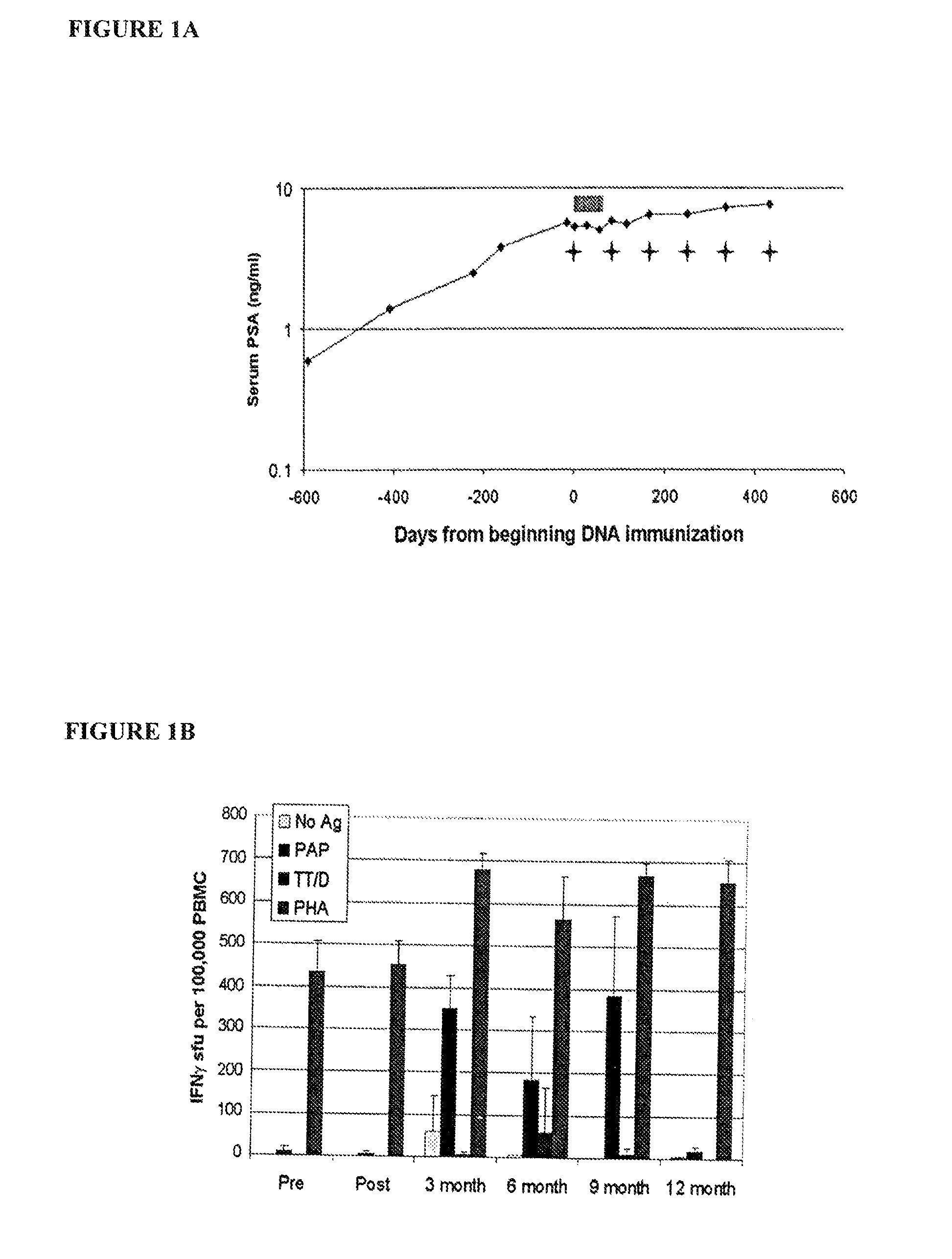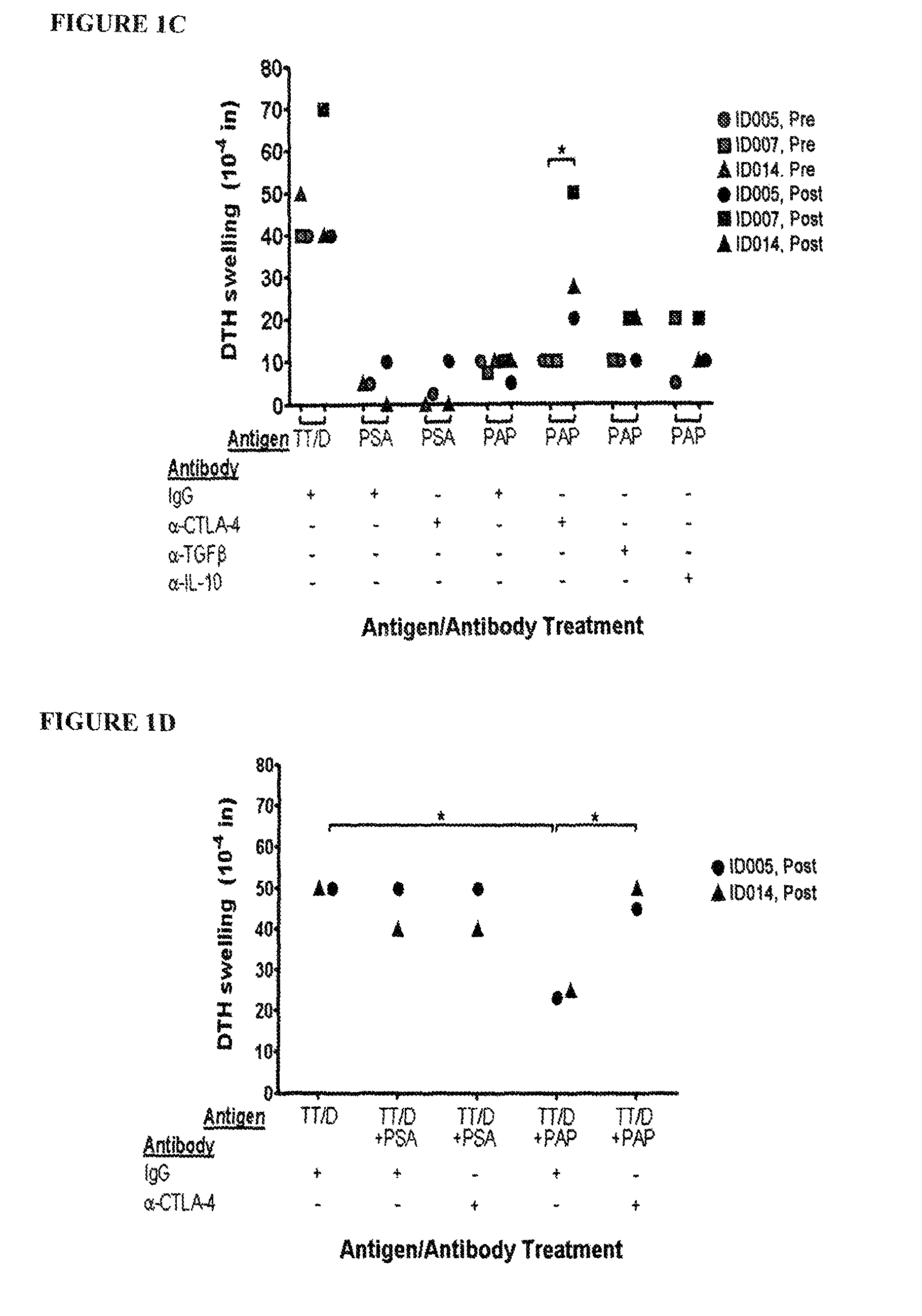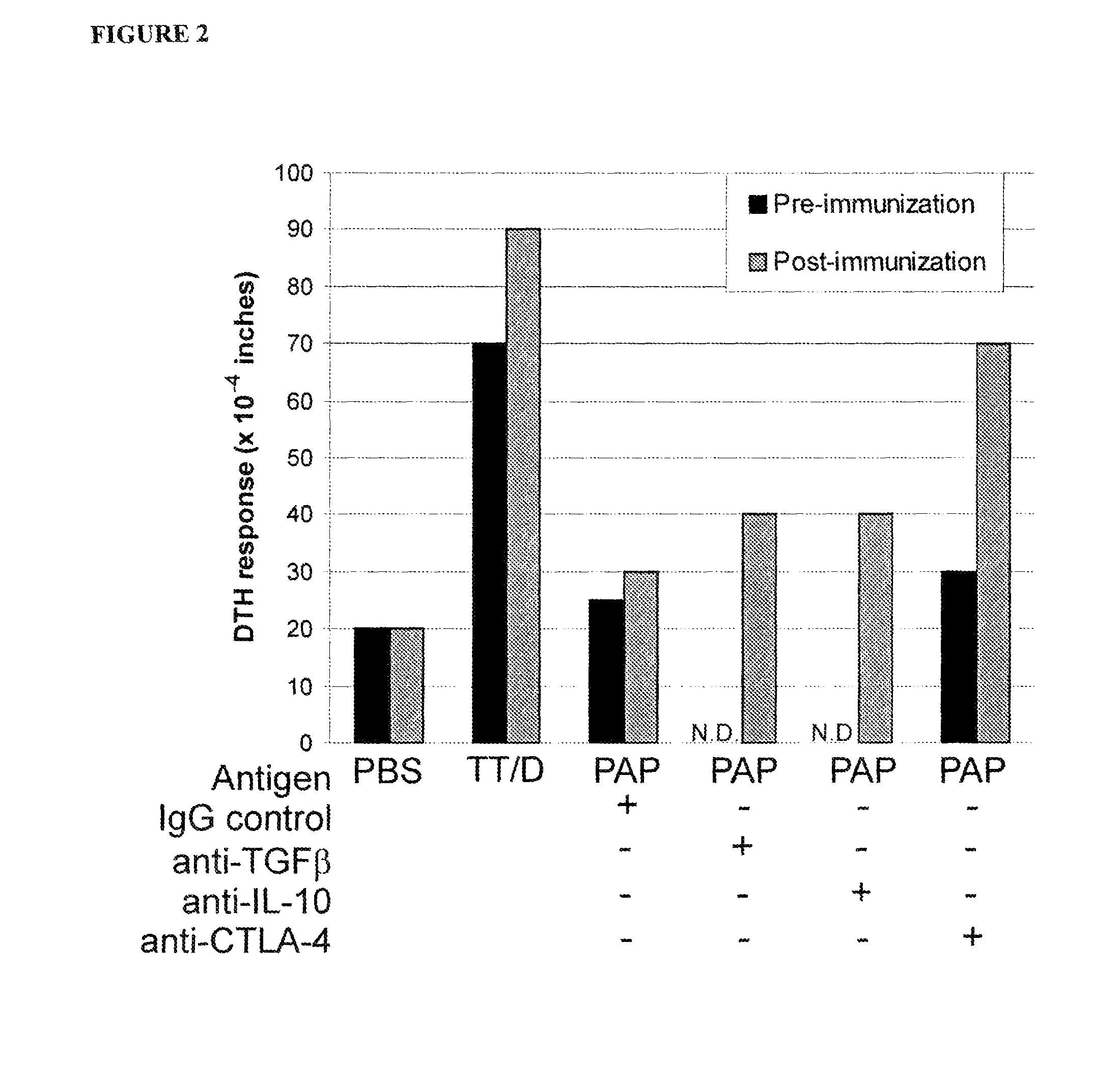Bystander immune suppression as a predictor for response to a vaccine
a technology of immune suppression and vaccine response, applied in the direction of immunological disorders, drug compositions, peptides, etc., can solve the problems of unfavorable use of certain cancer antigens, limited dth testing, and unwanted tolerance to certain cancer antigens
- Summary
- Abstract
- Description
- Claims
- Application Information
AI Technical Summary
Benefits of technology
Problems solved by technology
Method used
Image
Examples
example 1
Antigen-Specific Immune Suppression
[0048]Patient Populations:
[0049]Peripheral blood mononuclear cells (PBMC) used for the studies were obtained from individuals previously treated as part of a clinical trial at the University of Wisconsin Carbone Cancer Center. This included 21 subjects with PSA-recurrent prostate cancer, without radiographic evidence of metastases, and not receiving concurrent androgen deprivation. All subjects gave written, IRB-approved consent, for the use of residual blood products to be used for immunological research. Pre-immunization PBMC was collected by leukapheresis prior to vaccination with six biweekly intradermal injections of a DNA vaccine encoding PAP. All subjects also received an intramuscular tetanus booster immunization prior to receiving the DNA vaccinations. Post-immunization PBMC were collected by leukapheresis two weeks following the last immunization. All PBMC were cryopreserved in aliquots in liquid nitrogen until use.
[0050]Mice:
[0051]Mice w...
example 2
[0061]Antigen-Specific CTLA-4 Regulation can Persist Several Months after Immunization
[0062]To determine if the observed CTLA-4 regulation described in Example 1 was due to transient CTLA-4 expression on PAP-specific effector T cells or due to antigen-specific regulation of an effector response, PBMC from a patient who demonstrated a PAP-specific CTLA-4 regulated response were analyzed 3 months after immunization for a PAP-specific response. PBMC were obtained from the patient prior to immunization, two weeks after six biweekly immunizations, and three months following the post-immunization time point, as described in Example 1. PBMC were injected into the footpads of SCID mice with 1-25 μg of the antigens PAP or tetanus toxoid and blocking antibodies or control IgG (1 μg), as indicated. DTH responses were measured as net footpad swelling after 24 hours. CTLA-4 regulation could be observed three months after immunization (FIG. 3A). Also, PAP-specific effector response (IFNγ-secretin...
example 3
[0064]CD8+ T Cell Immune Responses Specific for a Vaccine Antigen can Suppress a DTH Response to a Bystander Recall Antigen
[0065]The experiments of Examples 1 and 2 evaluated PBMC obtained after immunization in individuals who otherwise showed no evidence of an effector immune response to PAP following immunization. To determine if this type of PAP-specific regulatory response was present prior to vaccination, TV-DTH assays were conducted essentially as described in Examples 1 and 2 to determine antigen-specific bystander suppression prior to vaccination. The tetanus recall antigen was injected into the footpads of SCID mice, essentially as described in Example 1, together with PBMC obtained prior to immunization from individuals who did not develop PAP-specific IFNγ-secreting immune responses after immunization, as determined by ELISPOT. The results demonstrate that these individuals showed evidence of PAP-specific bystander suppression of DTH responses to tetanus toxoid recall ant...
PUM
| Property | Measurement | Unit |
|---|---|---|
| volume | aaaaa | aaaaa |
| dial thickness gauge | aaaaa | aaaaa |
| time | aaaaa | aaaaa |
Abstract
Description
Claims
Application Information
 Login to View More
Login to View More - R&D
- Intellectual Property
- Life Sciences
- Materials
- Tech Scout
- Unparalleled Data Quality
- Higher Quality Content
- 60% Fewer Hallucinations
Browse by: Latest US Patents, China's latest patents, Technical Efficacy Thesaurus, Application Domain, Technology Topic, Popular Technical Reports.
© 2025 PatSnap. All rights reserved.Legal|Privacy policy|Modern Slavery Act Transparency Statement|Sitemap|About US| Contact US: help@patsnap.com



